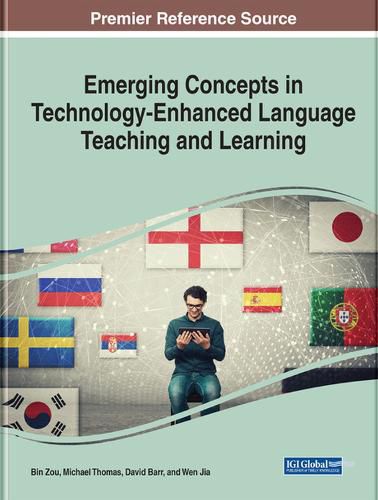Readings Newsletter
Become a Readings Member to make your shopping experience even easier.
Sign in or sign up for free!
You’re not far away from qualifying for FREE standard shipping within Australia
You’ve qualified for FREE standard shipping within Australia
The cart is loading…






This title is printed to order. This book may have been self-published. If so, we cannot guarantee the quality of the content. In the main most books will have gone through the editing process however some may not. We therefore suggest that you be aware of this before ordering this book. If in doubt check either the author or publisher’s details as we are unable to accept any returns unless they are faulty. Please contact us if you have any questions.
For years, language teachers have increasingly been using technologies of all kinds, from computers to smartphones, to help their students learn. Current trends in TELTL (technology-enhanced language teaching and learning), such as artificial intelligence, virtual reality, augmented reality, gamification, and social networking, appear to represent major shifts in the digital language learning landscape. However, various applications of technology to mediate language learning may be informed by reflecting not only on the present but perhaps more importantly on relevant insights from past research and practice.
Emerging Concepts in Technology-Enhanced Language Teaching and Learning explores the recent development of the new technologies for language teaching and learning to gain insights into and synergy of the theories, pedagogies, technological design, and evaluation of TELTL environments for comprehending the trends and strategies of the new digital era as well as investigate the possibility of future TELTL research direction. The book includes trends shaped by contemporary issues such as the COVID-19 pandemic. Covering topics such as digital education tools, L2 learnings, and sentiment analysis, this book serves as an essential resource for researchers, language teachers, educational software developers, administrators, IT consultants, technologists, professors, pre-service teachers, academicians, and students.
$9.00 standard shipping within Australia
FREE standard shipping within Australia for orders over $100.00
Express & International shipping calculated at checkout
Stock availability can be subject to change without notice. We recommend calling the shop or contacting our online team to check availability of low stock items. Please see our Shopping Online page for more details.
This title is printed to order. This book may have been self-published. If so, we cannot guarantee the quality of the content. In the main most books will have gone through the editing process however some may not. We therefore suggest that you be aware of this before ordering this book. If in doubt check either the author or publisher’s details as we are unable to accept any returns unless they are faulty. Please contact us if you have any questions.
For years, language teachers have increasingly been using technologies of all kinds, from computers to smartphones, to help their students learn. Current trends in TELTL (technology-enhanced language teaching and learning), such as artificial intelligence, virtual reality, augmented reality, gamification, and social networking, appear to represent major shifts in the digital language learning landscape. However, various applications of technology to mediate language learning may be informed by reflecting not only on the present but perhaps more importantly on relevant insights from past research and practice.
Emerging Concepts in Technology-Enhanced Language Teaching and Learning explores the recent development of the new technologies for language teaching and learning to gain insights into and synergy of the theories, pedagogies, technological design, and evaluation of TELTL environments for comprehending the trends and strategies of the new digital era as well as investigate the possibility of future TELTL research direction. The book includes trends shaped by contemporary issues such as the COVID-19 pandemic. Covering topics such as digital education tools, L2 learnings, and sentiment analysis, this book serves as an essential resource for researchers, language teachers, educational software developers, administrators, IT consultants, technologists, professors, pre-service teachers, academicians, and students.